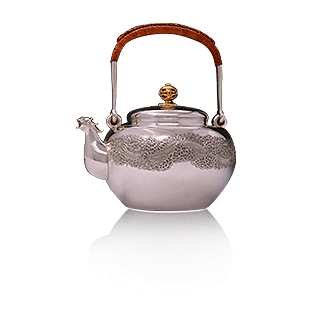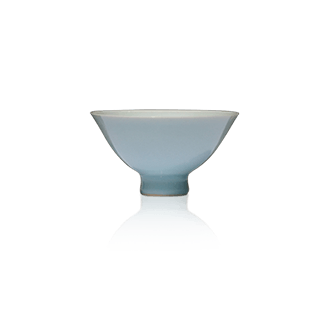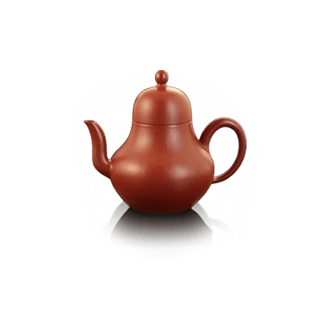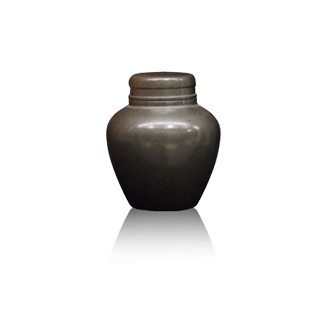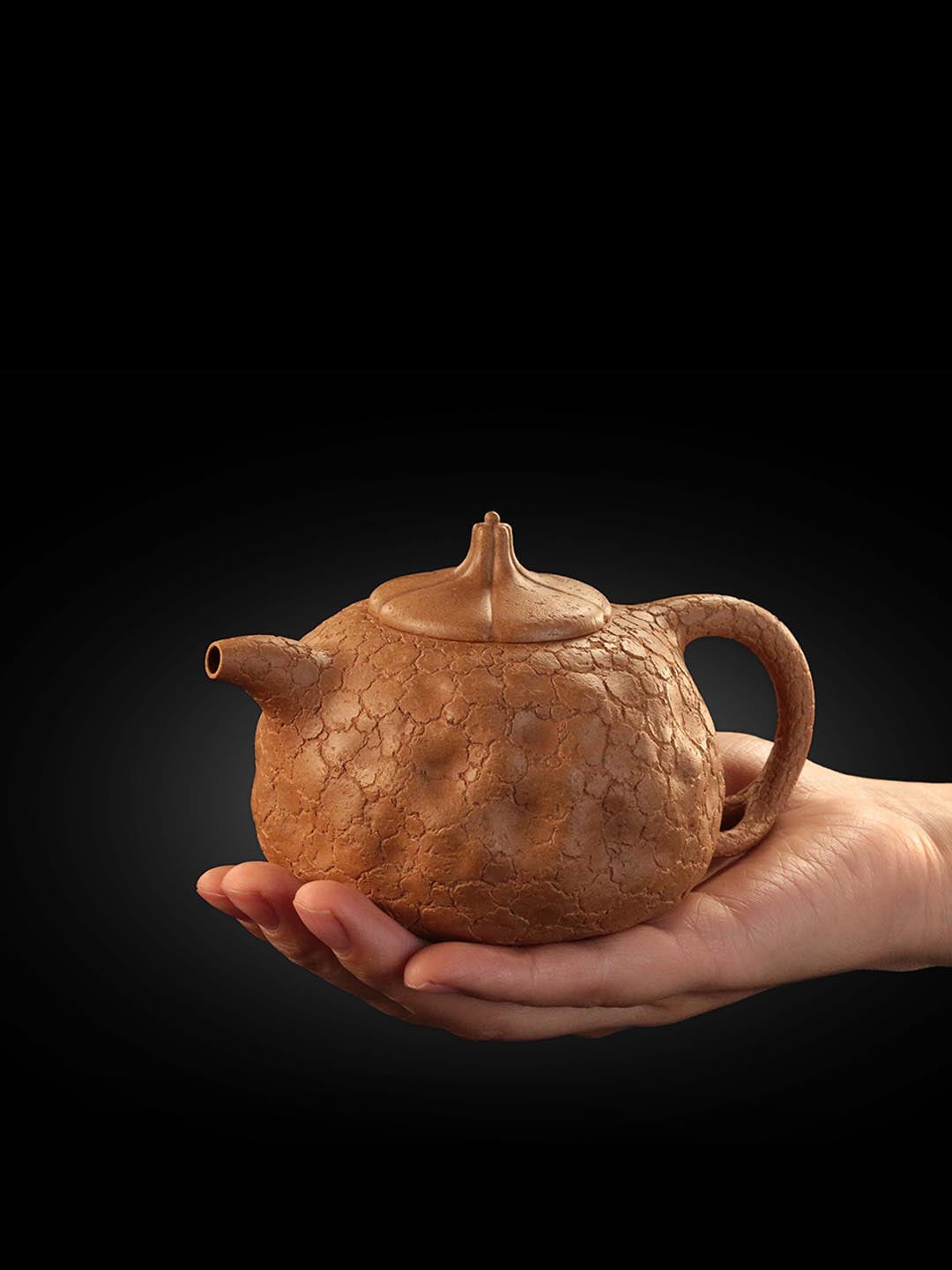
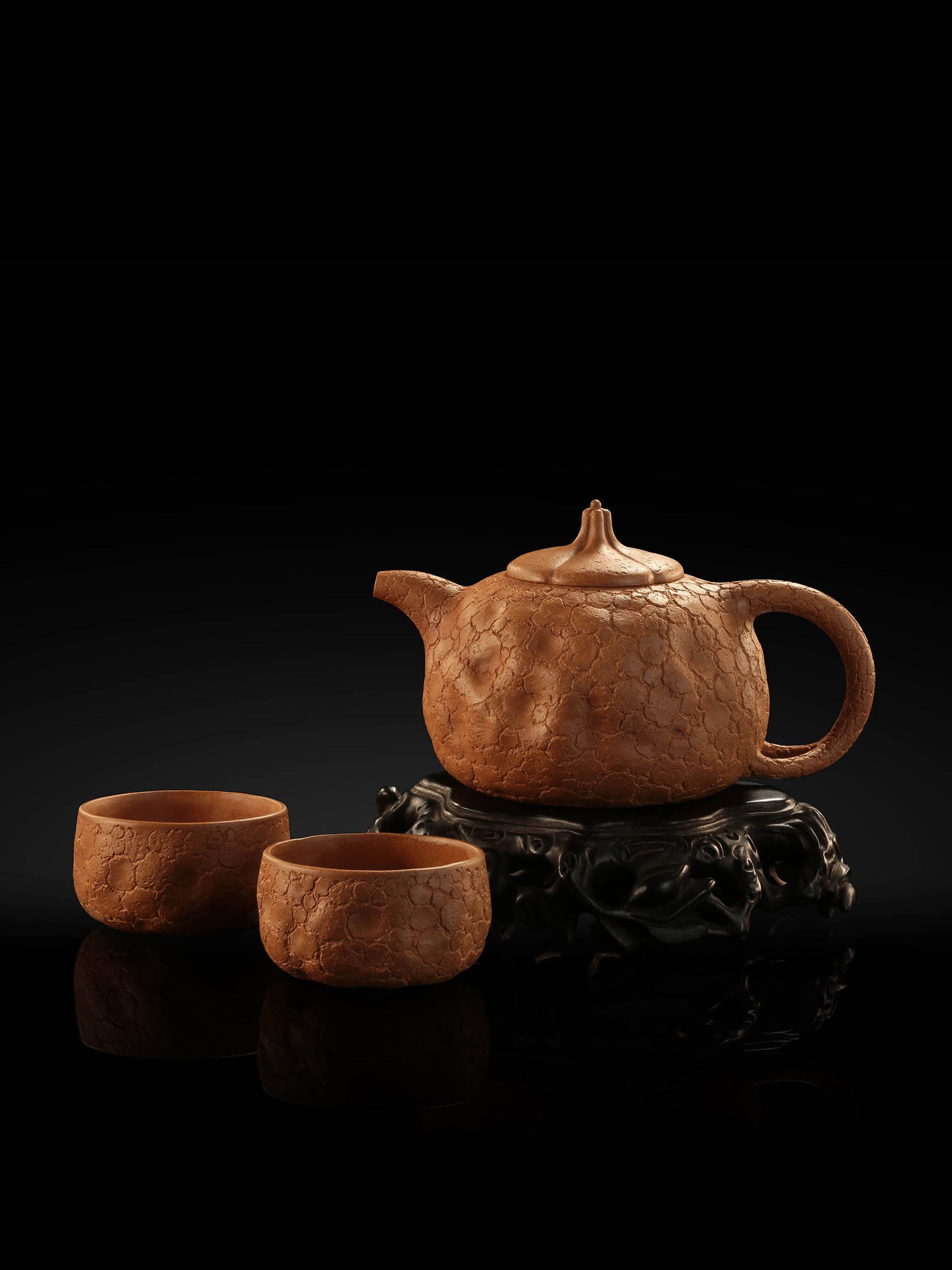



Pumpkin-shaped clay teapot for spring offering







Pumpkin-shaped clay teapot for spring offering
Pumpkin-shaped clay teapot for spring offering
Vessel Type: Gongchun Pot
Artist: dayatang
Material: Duan clay
Specifications : Length : 14cm; Rim diameter : 4.5 cm; Belly diameter : 9.5 cm; Overall height : 9cm; Capacity : 300ml
Gong Chun, the ancestor of flower vases
Gong Chun
Gong Chun was a real person, and he is recorded in the Yixing County Annals and other historical materials related to ceramics.
Gong Chun (c. 1506–1566), also known as Gong Gongchun or Gong Chun, was a man of unknown birth and death during the Zhengde and Jiajing reigns of the Ming Dynasty (1522–1566). He was originally a servant of Wu Yishan, a Jinshi (successful candidate in the highest imperial examination) from Yixing. Wu Yishan, a scholar of the same name, courtesy name Kexue, was a friend of Tang Bohu and others from Suzhou. He became a Jinshi in the Jiaxu year of the Zhengde reign (1514) and was later promoted to Sichuan Provincial Administration Commissioner as Vice Commissioner of Education. According to records, before Wu Yishan became a Jinshi, he studied at Jinsha Temple in Yixing (located in present-day Hufu Town, Yixing). During his spare time, the servant Gong Chun discovered that the monks at Jinsha Temple were refining the fine clay used for making pottery jars and urns, shaping it into round, hollowed-out forms, and creating pot-shaped vessels. He then "secretly imitated the craftsmanship of an old monk, also sifting through fine clay, shaping it in the center of a teaspoon, and smoothing it inside and out with his fingers," creating a teapot with a "chestnut-colored, dark patina like ancient iron." This is the famous Yixing teapot that later became renowned. Because the teapot was made by Gong Chun, it is commonly known as the "Gong Chun Teapot." The Tree Burl Teapot, now in the collection of the National Museum of China, was made by him. It has a simple and ancient shape, with faint finger-like spiral patterns, and the two characters "Gong Chun" in seal script are inscribed on the inside of the handle and the body of the teapot. This teapot was originally in the collection of Wu Dacheng. In the 1930s, Mr. Chu Nanqiang purchased it from an antique stall in Suzhou, but it was missing a lid. Huang Yulin, a famous teapot maker during the Republic of China period, fitted it with a melon-shaped knob lid. Later, the contemporary calligraphy master Huang Binhong (deceased) examined it and felt that a melon-shaped knob would not grow on the body of a tree burl teapot. Later, Pei Shimin (deceased), a famous modern teapot maker, fitted it with a lingzhi-shaped lid. After the liberation, it was collected by the state.
legend
Legend has it that during the Zhengde period of the Ming Dynasty, a scholar was studying for the imperial examination at Jinsha Temple in Yixing, and Gong Chun was his page.
When Gong Chun accompanied his master to study at Jinsha Temple in Yixing, an old monk there was skilled at making Zisha teapots. Gong Chun secretly learned how to make them. The inspiration for the teapot's shape came from the burl of a large ginkgo tree next to Jinsha Temple. The surface of the teapot is wrinkled and mottled, with the swirling burl patterns clearly displayed. Gong Chun's teapots are simple in style and exquisitely crafted. They are elegant and natural, pure, thin, and sturdy. They are renowned.
A Gongchun teapot is more valuable than gold and jade. Zhou Shu wrote in "One Hundred Poems of Taiyang": "I value Gongchun's small teapot the most. One teapot can be used for decades and is worth a gold scepter." Very few Gongchun teapots have survived to this day.
The beauty of clay teapots originated with Gong Chun. This teapot possesses a natural beauty that evokes a sense of returning to simplicity. The body of the teapot is infused with the burl of an old tree, its entire surface displaying the texture of bark, perfectly showcasing the mottled grain, appearing as if naturally formed, naturally rustic. The lid is shaped like a pumpkin, adding a touch of whimsy and a perfect balance of strength and gentleness to the teapot.
Vessel Type: Gongchun Pot
Artist: dayatang
Material: Duan clay
Specifications : Length : 14cm; Rim diameter : 4.5 cm; Belly diameter : 9.5 cm; Overall height : 9cm; Capacity : 300ml
Gong Chun, the ancestor of flower vases
Gong Chun
Gong Chun was a real person, and he is recorded in the Yixing County Annals and other historical materials related to ceramics.
Gong Chun (c. 1506–1566), also known as Gong Gongchun or Gong Chun, was a man of unknown birth and death during the Zhengde and Jiajing reigns of the Ming Dynasty (1522–1566). He was originally a servant of Wu Yishan, a Jinshi (successful candidate in the highest imperial examination) from Yixing. Wu Yishan, a scholar of the same name, courtesy name Kexue, was a friend of Tang Bohu and others from Suzhou. He became a Jinshi in the Jiaxu year of the Zhengde reign (1514) and was later promoted to Sichuan Provincial Administration Commissioner as Vice Commissioner of Education. According to records, before Wu Yishan became a Jinshi, he studied at Jinsha Temple in Yixing (located in present-day Hufu Town, Yixing). During his spare time, the servant Gong Chun discovered that the monks at Jinsha Temple were refining the fine clay used for making pottery jars and urns, shaping it into round, hollowed-out forms, and creating pot-shaped vessels. He then "secretly imitated the craftsmanship of an old monk, also sifting through fine clay, shaping it in the center of a teaspoon, and smoothing it inside and out with his fingers," creating a teapot with a "chestnut-colored, dark patina like ancient iron." This is the famous Yixing teapot that later became renowned. Because the teapot was made by Gong Chun, it is commonly known as the "Gong Chun Teapot." The Tree Burl Teapot, now in the collection of the National Museum of China, was made by him. It has a simple and ancient shape, with faint finger-like spiral patterns, and the two characters "Gong Chun" in seal script are inscribed on the inside of the handle and the body of the teapot. This teapot was originally in the collection of Wu Dacheng. In the 1930s, Mr. Chu Nanqiang purchased it from an antique stall in Suzhou, but it was missing a lid. Huang Yulin, a famous teapot maker during the Republic of China period, fitted it with a melon-shaped knob lid. Later, the contemporary calligraphy master Huang Binhong (deceased) examined it and felt that a melon-shaped knob would not grow on the body of a tree burl teapot. Later, Pei Shimin (deceased), a famous modern teapot maker, fitted it with a lingzhi-shaped lid. After the liberation, it was collected by the state.
legend
Legend has it that during the Zhengde period of the Ming Dynasty, a scholar was studying for the imperial examination at Jinsha Temple in Yixing, and Gong Chun was his page.
When Gong Chun accompanied his master to study at Jinsha Temple in Yixing, an old monk there was skilled at making Zisha teapots. Gong Chun secretly learned how to make them. The inspiration for the teapot's shape came from the burl of a large ginkgo tree next to Jinsha Temple. The surface of the teapot is wrinkled and mottled, with the swirling burl patterns clearly displayed. Gong Chun's teapots are simple in style and exquisitely crafted. They are elegant and natural, pure, thin, and sturdy. They are renowned.
A Gongchun teapot is more valuable than gold and jade. Zhou Shu wrote in "One Hundred Poems of Taiyang": "I value Gongchun's small teapot the most. One teapot can be used for decades and is worth a gold scepter." Very few Gongchun teapots have survived to this day.
The beauty of clay teapots originated with Gong Chun. This teapot possesses a natural beauty that evokes a sense of returning to simplicity. The body of the teapot is infused with the burl of an old tree, its entire surface displaying the texture of bark, perfectly showcasing the mottled grain, appearing as if naturally formed, naturally rustic. The lid is shaped like a pumpkin, adding a touch of whimsy and a perfect balance of strength and gentleness to the teapot.





Frequently asked questions
Use the FAQ section to answer your customers' most frequent questions.
Order
Yes, we ship all over the world. Shipping costs will apply, and will be added at checkout. We run discounts and promotions all year, so stay tuned for exclusive deals.
It depends on where you are. Orders processed here will take 5-7 business days to arrive. Overseas deliveries can take anywhere from 7-16 days. Delivery details will be provided in your confirmation email.
You can contact us through our contact page! We will be happy to assist you.





